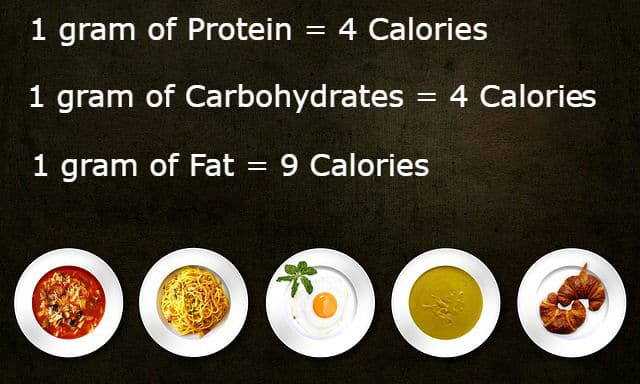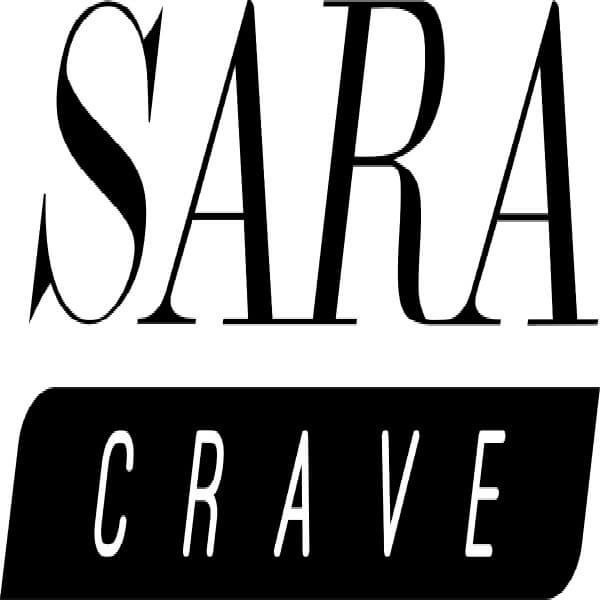- in Recipes & Food by Ana Maria

What are macro nutrients?
You might think that the question, what are macro nutrients is pretty boring, but you'd be wrong. You really should care!
So many people think they are eating healthy, but because they miss understand, or don't even think about macro nutrients, their body is actually becoming really unhealthy.
Those who have no time for healthy eating will sooner or later have to find time for illness. - Edward Stanley
Mostly, the word nutrition is linked with 'whatever we eat' but in the real sense, the word has a wider perspective and implication.
Sports nutrition is a topic that can be sub-categorized under the broader topic of Nutrition.
The feature that sets apart sorts nutrition from its parent category is that it is different, a lot different.
Have you ever compared the physical structure of a 100 m sprinter with that of an average student who doesn't indulge in sports much?
There are distinct differences that exist. The extent to which each person's body can perform varies dramatically.
The sprinter can run a distance of 100 m in around 12 seconds but that isn’t possible for the skinny college student without any experience in sports.
In the same way, the sprinter can accelerate quickly to high speeds; she can use the power of her shoulders and upper torso to thrust her entire body forward. She is able to do so because her body is physiologically much different from the other college student.
The runner has a higher muscle mass, a properly developed lower body which includes powerful quadriceps, gluteus, hamstring and calves. Her upper body complements with whatever her lower body does.
She has a properly toned body with minimal fat percentage so she has to haul a minimum 'extra' weight at a high speed.
This is just the outer physical features we can observe. What about the internal features? Her lung capacity? Her VO2 threshold? Her lactic acid threshold?
This has to be different as well. What about her energy system? Shouldn't that be different as well? Tweaked and mastered to deliver maximum energy? To produce this explosive energy, shouldn't her food intake be different from that of the other college student?
The answer to all these questions is yes.
Her internal and external physical features are much different and her body behaves, anticipates and works in a much different way as compared to any non-athletic person.
This behavior of her body demands different type of nutrition.
This is where sports nutrition sets itself apart from regular nutrition. Regular FDA recommendation may tell you to eat 2200 calories. But 2200 calories doesn't do justice to a weight-lifter who lifts 60 Kg in snatch and clean!
Her requirements, her bodies working capacity is much different from that of the average woman.
The same holds true for people who are active and want to sculpt their body. Their energy demand is much different than that of an average person living a sedentary lifestyle.
Since we're already on the topic of 'energy', this is where we can start our discussion of macro nutrients. Our body needs energy to survive, it is a simple concept. Our bodies have been tuned to extract energy from different resources. These resources include:
Our body's prime function is to continue to provide us with energy in order to perform vital bodily tasks.
The energy is mostly extracted from whatever we eat.
This 'food we eat' or better put, 'macro nutrients' are responsible to provide us with basic energy (Hence the name 'Macro'). Macro nutrients come in three broad categories.
They are known as Proteins, Carbohydrates and Fats.
Each of these macro nutrients can be subdivided into a hundred different subcategories!
Each macro nutrient has a particular function and purpose in the body.
Broadly speaking, the general purpose is to provide our body with energy. How much energy does each macro nutrient provide? It is quite simple.
This is merely an oversimplification of how our body produces energy from the supplied macro nutrients.
There are hundreds of different variables and considerations that the body silently takes care of and then switches back and forth to different energy systems.
There are countless hormones, chemical reactions involved and the biochemistry can easily overwhelming.
However, I've made an attempt to simplify all the topics that need to be explained for your understanding of 'Nutrition, for body sculpting and recomposition.'
Let's start by taking a brief look on each of these macro nutrients.
What are macro nutrients; the different types
Fats;
No one likes them, everyone avoids them yet they are responsible for many important bodily functions.
One quality of fats that sets them apart from Carbs and proteins is their energy density.
Unlike carbs or proteins, 1 g of fat yields 9 calories of energy.
This may seem spectacular but fats are the hardest to burn for energy.
They are energy-efficient yet slow, meaning that they are an ideal candidate for energy storage. This energy store comes in handy on a rainy day when there aren't enough calories present from carbs and proteins.
Under such circumstances, the body burns fat for energy. Other functions of fats include:
- Protects vital organs
- Act as a solvent for absorption of many vitamins and minerals
- Important for formation of hormones (Testosterone!)
Fats can be subdivided into 4 categories.
These subcategories are made on the basis of the double bond present between carbon atoms.
My apologies for diving deep into the world of biochemistry but this knowledge will come in handy when you are looking for healthy fats to consume during your weight training regimen.
Saturated Fats: These fats are saturated, meaning, they have no double bonds. This tells us that the fat is already fully saturated with Hydrogen atoms.
These kind fats are usually solid at room temperature.
Examples include animal fat, Lard, fat found in cheese. Saturated fats are important as they are a basic building block of a variety of hormones and cell membranes.
The downside is that an excess of these fats can raise blood cholesterol levels.
Monosaturated Fats: These fats only have a single double bond. These fats are usually liquid at room temperature. Examples include olive oil and canola oil.
The specialty of Monosaturated fats is that they help us protect against heart disease and blood cholesterol build up.
Polyunsaturated Fats: Polyunsaturated fats have two or more carbon double bonds.- Omega 3 Fatty Acids: Have a positive impact on cardiovascular health. Sources include Oily fish (Salmon, Mackerel), Soybean and rapeseed.
- Omega 6 Fatty Acids: Have a positive impact on brain function and normal growth. Sources include seeds and nuts (Peanuts, walnuts, Cashews)
We will further explore Omega 3 & 6 essential fatty acids in the section 'Essential fatty acid supplementation.'
Trans Fatty Acids: Trans Fatty acids are chains of unsaturated fats combined together in a Trans configuration.
This is done mainly by hydrogenation of vegetable oil. This is a seriously unhealthy type of fat that must be avoided at all costs.
It is usually found in foods like margarine and baked goods (biscuits, cakes). Trans fat intake elevates the risk of heart disease.
Proteins;
The favorite macronutrient of anyone who weight trains!
Proteins are made up of smaller biological units called amino acids.
Amino acids come together to form polypeptide chains of varying shape, size and compactness.
A typical protein may consist of 20 Amino Acids, other Proteins may contain thousands of these Amino Acids.
Protein is present abundantly in the body. It is present in your hair, tendons, muscles, ligaments and even skin.
Talking about dietary protein; this protein has multiple functions:
- Improves Immune system function
- Required for growth
- Required for tissue repair
- Needed for the production of enzymes & hormones
- Needed for lean muscle mass
In total there are 20 known Amino Acids.
Out of these 20, the body can synthesize (Make on its own using dietary Protein as a source of Amino Acids) almost 11 of them.
The rest of the 9 Amino Acids cannot be synthesized by the body and as a result, they must be included in the diet.
These Amino Acids are known as essential amino acids. The list of essential Amino Acids includes:
- isoleucine
- threonine
- tryptophan
- valine
- leucine
- methionine
- phenylalanine
- histidine
Taken with a combination of sources, the amino acid profile can be easily completed.
Proteins can also be utilized by the body as a source of energy; however, proteins are hard to break down.
The energy required by the body to break down Proteins is relatively high and for this reason, body's preferred source of fuel isn't Protein.
How much Protein does a healthy person require? We'll calculate that in the section 'Determining ratios of macro nutrients for your diet'.
Carbohydrates;
Next up we have the self sacrificing Carbs! To keep things simple, we'll divide the Carbohydrates group into 2 categories:
Simple Carbohydrates: Simple Carbohydrates or mono-saccharides are ready made sugars. These types of carbohydrates cannot be further broken down into simple sugars.
Examples of simple sugars include glucose and fructose.
Complex Carbohydrates: Complex Carbohydrates or poly-saccharides contain strings of simple sugars.
This means that these Carbohydrates need to be broken down in order to get digested or to be used as fuel.
Some examples of complex carbohydrates include lactose, maltodextrins and amylopectin.
The human body is a master of converting carbohydrates into energy.
Carbohydrate is the body's preferred source of fuel. The brain constantly needs glucose, the liver needs and stores glycogen, the muscles store glycogen as well.
This way, carbohydrates are needed by the entire body in one form or the other. Basic functions of Carbohydrates include:
- A major energy source for the body
- Helps to maintain bodyweight
- Prevents Fat accumulation
- Helps in digestion and bowel movement
- Involved in organ repair
- Food for brain
Dietary fiber is another form of Carbohydrates.
Dietary fiber is a form on non-starch Carbs. Dietary Fiber consists of indigestible parts of plant food (Cellulose).
This property of dietary fiber helps us with our gastro intestinal track.
The indigestible fiber ensures a good transit time (Time interval between eating a particular food and excreting it!), avoids problems like constipation and protects us from serious problems like colon cancer.
How much Carbs does a healthy person require? We'll calculate that in the section 'Determining ratios of macro nutrients for your diet'
What are macro nutrients - calculating macros in your diet;
So now you know what are macro nutrients, but we're not finished yet, because you still need to know how to calculate them in your diet.
Depending what you are wanting to achieve from your diet, i.e maintain weight, lose weight, gain weight, and how active you are in daily life and training, you will need a different amount of total calories, because, well, everyone is different!
If you really want to to understand the hows and whys of calculating your total caloric requirements, I suggest you take a look at, how to determine your daily caloric needs, by free dieting.
But, if you'd just like to know the answer, without having to worry about all the scientific stuff, go straight to their free and easy daily caloric needs calculator here.
Daily Caloric Calculator
Once you know your total daily caloric needs, that needs to be broken down into how much of each macro nutrient your body needs.
Determining the right ratio of Carbs, protein and fats from your diet isn't less than a work of art!
A person consuming 2200 calories in a certain ratio could be losing weight but alter the mix while keeping the calories constant, he/she may start to gain weight.
You can never underestimate the effectiveness of the proportions by which you take your macro nutrients.
Another thing to remember is that macro nutrients are sometimes very unforgiving.
An extra 100 calories of fat consumed daily adds up to 36500 calories a year which can be translated into 4.7 Kg of fat!
And who wants that!!
Of course, the body has its own regulatory system which will resist it gaining this exact 4.7 Kgs as fat but a 2 Kg gain resulting from 36500 excess calories annually doesn't seem like a far-fetched assumption. After all, the human body has a limit to its resilience.
To give you a summary of all the steps, this is what we are going to do:
- 1Find your recommended protein intake (g/kg) and multiply it by your total weight to get your protein requirement in Calories.
- 2Multiply your total caloric intake (Calculated earlier) and multiply it by 0.3 (Range is 0.25 – 0.35) to get your fat requirement. This is based on the assumption that 25 % - 35 % of your calories should come from fat.
- 3Total Calorie intake – Value in step 1 – Value in step 2 = Calories from Carbohydrates!
What are macro nutrients - Protein calculation
I usually start off with my favorite macro nutrient (The protein). RDA recommends a meager 0.8 grams per Kg of body weight for an individual.
This usually works fine for a couch potato who doesn't do much throughout the day.
For athletes and people who train/workout daily, this recommended dose of Protein isn't enough.
Let's look at another table that categorizes Protein intake for different people:
Category Type | Activity List | Protein Requirement |
|---|---|---|
Category 1 | Sedentary Lifestyle. Sitting, talking. Little /Almost no physical activity throughout the day. | 0.8 g/kg |
Category 2 | Sedentary lifestyle 2. Little walking but no exercise. Some physical activity but nothing that can be labeled as ‘Exercise’. | 0.8 – 1.2 g/kg |
Category 3 | Moderately active. Weight training with light weights for 30 – 45 minutes daily. | 1.2 - 1.8 g/kg |
Category 4 | Active Lifestyle. Hitting the weights hard for 45 – 60 minutes + 20 minutes of Cardio training | 1.6 – 2.2 g/kg |
Category 5 | Intense physical activity. Weight training for 60 and over minutes, hitting the weight really hard. 30 - 45 minutes of Cardio Conditioning. | 2.2 - 2.8 g/kg |
- If I weigh 60 Kgs and I’m moderately active, this is what I’ll do to calculate my protein requirement:
Pick out a numerical value from column 3 based on the activity list that best describes you and then multiply it with your weight. This will give you the grams of Protein. Multiply this with 4 and you will get calories from Protein. Confused? Here’s an example:
What are macro nutrients - Fat calculation
This one is simple. Whatever your daily caloric intake is (As calculated above), multiply it by 0.3. This will be the number of calories you require from fat.
For example, if 2400 calories is your magic number
- Multiplying it by 0.3 gives:
720 Calories.
- 720 Calories out of 24 00 Calories should come from Fats.
Let’s put it in another way:
720 / 9 = 80 grams
80 grams of fats are allowed ( 1 gram of fat = 9 calories )
What are macro nutrients - Carbohydrate calculation
Whatever number you’re left behind is the amount of calories you need from carbohydrates.
Carbohydrate Requirement =
Total Calorie intake – Protein Calculation – Fat Calculation = Carbs required.
What mix of macro nutrients is right for you?
Again, that's a question that needs a really personalised answer.
It depends on your current conditioning, life style, training, and what your goals are.
Here is another helpful macro nutrient calculator which you can use to help you get your macro mix right. Try this best macro calculator
If losing some weight, and achieving a toned physique sounds like what you are looking for, then I've covered a lot more detail in this blog on sports nutrition for the body you want.
Even once you've worked out what mix of macro nutrients is correct for you, it can still be a hard task to come up with meal plans that keep your diet healthy.
These 31 clean eating recipes will really help out, giving you easy to make choices for healthy lunch or dinner meals.
Choosing the right balance of macro nutrients will keep your body fueled, with good energy levels to perform at its best, and keep your system functioning and healthy.
Selecting foods that are rich in nutrients just makes sense, and can have a huge impact on your health.
So, happy eating, and remember;
Your diet is a bank account. Good food choices are good investments - Bethenny Franke














